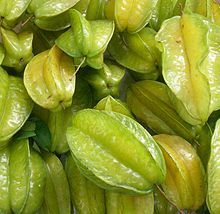Let me start with a huge apology for not posting for such a long time. I can list number of reasons, but the main reason was Google blogger introduced new format of dashboard also I ran out of memory on Picasa to post pics and I did not have time to figure it all out. Then my computer crashed and I lost all my pics of the recipes that I was going to post.
To top it all I visited India for a family wedding and to take care of my parents, there I fell and fractured my wrist. Now here I am typing with right hand caste :(
To my pleasant surprise Google did get their act together and worked out all the kinks in their new format, it is much easier to post pics now. I am still trying to figure out most efficient way to do this.
So here I am back again. A Big Thanks to all my followers on Pinterest and on Blogger for keeping me inspired.
I am going to post a recipe that I haven't tried for long time in USA. It is slightly sweet, sour and spicy delicious side dish, that goes very well with rice, or chapati. When I saw starfruit here I got very excited and had to share this with you. I will post the information about starfruit at end of this post.
First let me post the recipe.
4 firm and unripe Starfruits
4 Jalapeno Peppers
1 Green Pepper (capsicum)
2 Small tomatoes
4 green onions
1 Teaspoon Ginger garlic paste
3 Tablespoon Olive oil
1 teaspoon cumin seeds
1/4 teaspoon of Asefetida
3 tablespoon of coriander powder
2 tablespoon of brown sugar (can use jaggery or cane sugar)
1 tablespoon of cumin powder
1 tablespoon of mango powder
1 teaspoon of turmeric powder
1 teaspoon of cayenne pepper
1 cup of water
Juice from 1 fresh lime to taste (if the star fruit are sour enough you may omit this, here in USA even the unripe star fruits are NOT sour at all.)
Salt to taste
Handful of Cilantro leaves finely chopped
Chop all the veggies and dice the starfruit to desired bite size pieces or as shown in pics.
Keep them separate.
Heat oil in pan on medium heat.
When oil is hot add cumin seeds, when they crackle add asefetida and ginger garlic paste.
Add green onions and peppers.
Saute onions and peppers for 2-3 min until onions light brown.
Add chopped tomatoes.
Cook for another 2 min.
Add diced star fruits and salt.
Cook for 2 min, add water and spices.
Cook for 10 min covered on medium-low heat
until star fruit is tender but not very mushy.
Add lime juice to taste and garnish with chopped Cilantro.
Serve hot with Chapati or Rice.
Now let me tell you little bit about Carambola, also known as Starfruit in Engllish and Kamrakh in Hindi. It is the fruit of Averrhoa carambola, a species of tree native to the Philippines, Indonesia, Malaysia, India, Bangladesh and Sri Lanka. The fruit is popular throughout Southeast Asia, the South Pacific and parts of East Asia. The tree is also cultivated throughout non-indigenous tropical areas, such as in Latin America, the Caribbean, and the southern United States.
The fruit has distinctive ridges running down its sides (usually five, but can sometimes vary); in cross-section, it resembles a star, hence its name.
The flesh is crunchy, firm, and extremely juicy. It does not contain fibers and has a texture similar in consistency to that of grapes. Carambolas are best consumed shortly after they ripen, when they are yellow with a light shade of green or just after all traces of green have disappeared. They will also have brown ridges at the edges and feel firm. Fruits picked while still slightly green will turn yellow in storage at room temperature, but will not increase in sugar content. Overripe carambola will be yellow with brown spots and can become blander in taste and soggier in consistency
Ripe sweet type carambolas are sweet without being overwhelming as they rarely have more than 4% sugar content. They have a tart, sour undertone, and an oxalic acid odor. Ripe carambolas may also be used in cooking. In Southeast Asia, they are usually stewed in cloves and sugar, sometimes with apples. In China, they are cooked with fish. In Australia, they may be cooked as a vegetable, pickled, or made into jams. In Jamaica they are sometimes dried.
Unripe and sour type carambolas can be mixed with other chopped spices to make relishes in Australia.
In the Philippines, unripe carambolas are eaten dipped in rock salt. In Thailand, they are cooked together with shrimp. The juice from carambolas is also used in iced drinks, particularly the juice of the sour varieties. In Hawaii they are used to make sherbet, while in the Philippines they can be used as seasoning. In India, the juice is bottled for drinking.
Benefits
Risks
Carambolas contains oxalic acid, which can be harmful to individuals suffering from kidney failure, kidney stones, or those under kidney dialysis treatment. Consumption by those with kidney failure can produce hiccups, vomiting, nausea, and mental confusion. Fatal outcomes have been documented in some patients.Drug interactions
Like the grapefruit, carambola is considered to be a potent inhibitor of seven cytochrome P450 isoforms. These enzymes are significant in the first-pass elimination of many medicines, and, thus, the consumption of carambola or its juice in combination with certain medications can significantly increase their effective dosage within the body. Research into grapefruit juice has identified a number of common medications affected, including statins, which are commonly used to treat cardiovascular illness, and benzodiazepines (a tranquilizer family including diazepam).http://en.wikipedia.org/wiki/Carambola
http://en.wikipedia.org/wiki/Wikipedia:Text_of_Creative_Commons_Attribution-ShareAlike_3.0_Unported_License
Recipe and Rest of the Photographs by:
Surekha.


